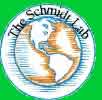|
A.E. West, P.D. Brooks, M.C. Fisk,
L.K. Smith, E.A. Holland, C.H. Jaege, III, S. Babcock, R.S. Lai, and S.K.
Schmidt
|
|
|
|
|
We
measured CH4 fluxes from three major plant communities characteristic
of alpine tundra in the Colorado Front Range. Plant communities in this
ecosystem are determined by soil moisture regimes induced by winter snowpack
distribution. Spatial patterns of CH4 flux during the snow-free
season corresponded roughly with these plant communities. In Carex-dominated
meadows, which receive the most moisture from snowmelt, net CH4
production occurred. However, CH4 production in one Carex
site (seasonal mean=+8.45 mg CH4m-2d-1
was significantly larger than in the other Carex sites (seasonal
means= -0.06 and =0.05 mg CH4m-2d-1. This
high CH4 flux may have resulted from shallower snowpack during
the winter. In Acomastylis meadows, which have an intermediate moisture
regime, CH4 oxidation dominated (seasonal mean= -.043 mg CH4m-2d-1).
In the windswept Kobresia meadow plant community, which receive the
least amount of moisture from snowmelt, only CH4 oxidation was
observed (seasonal mean= -0.77 mg CH4m-2d-1).
Methane fluxes correlated with a different set of environmental factors
within each plant community. In theCarex plant community CH4
emission was limited by soil temperature. In the Acomastylis meadows,
CH4 oxidation rates correlated positively with soil temperature
and negatively with soil moisture. In the Kobresia community, CH4
oxidation was stimulated by precipitation. Thus, both snow-free season CH4
fluxes and the controls on those CH4 fluxes were related to the
plant communities determined by winter snowpack. |
|
|







